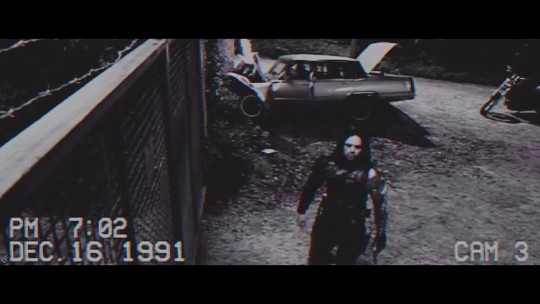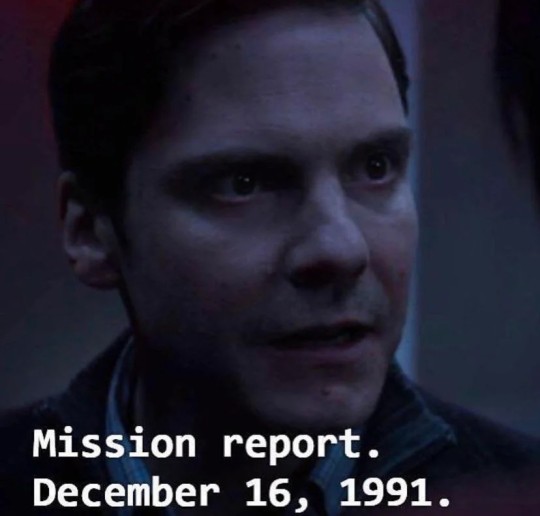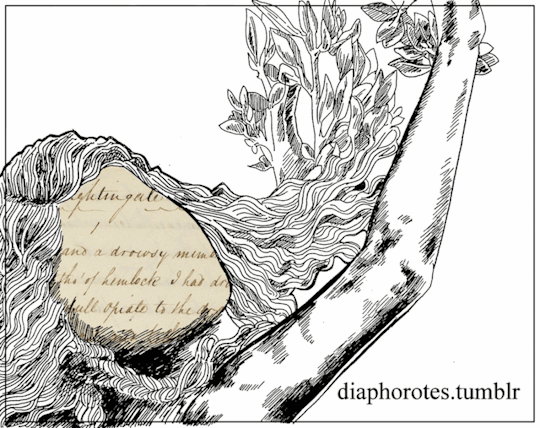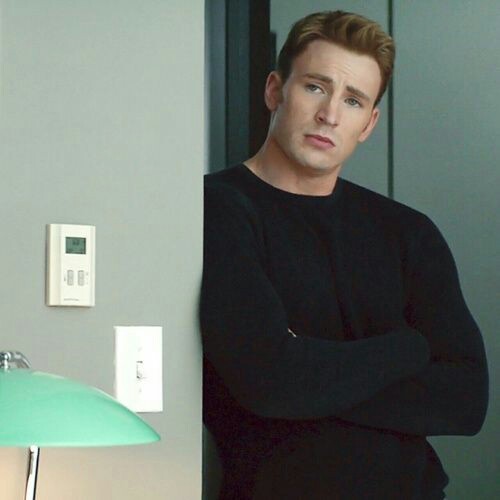#capitán America civil war
Explore tagged Tumblr posts
Text









#Capitán América: Civil War#Captain America: Civil War#póster#cartel#cinema#movie#film#filme#cinefilia#cinephile#cine#Marvel#cinecómic#MCU#UCM#Marvel Cinematic Universe#Universo Cinematográfico de Marvel#Universo Cinemático de Marvel#Capitán América#Captain America
3 notes
·
View notes
Text
Thinking about superheroes as a Usamerican thing.
You see, the thing about the United States during the 20th century is that it didn't experience major unrest. I know what you're going to say, and yes, there was PLENTY of unrest. But overall, the structure of the state was never compromised. There was never a coup, there was never a civil war, there was never a foreign invasion. War? It did happen, but in distant shores. You could live (and indeed, many did live) a comfortable life for decades without any kind of major political struggle reaching you. Many classic superhero stories have them showing up somewhere before or during WWII, just when the US was reaching the zenith of its global power.
And that's why a superhero in the United States has it easy. Just fight crime, and the ocassional supervillain, or alien invaders. Truth, Justice, and the (Us)american way. After all, you are convinced that you are fighting for democracy and liberty, who wouldn't want to do that? Okay, but what about civil rights and such? Oh, no need to get into politics, just do a speech about how kindness is the way, without getting into specifics. Most famous people do (many famous people did). It's easy. The government of the US will change parties, things will change, but at the end, you have decades of prosperity ahead, without really needing to pick a side, just punch bad guys.
What if Superman had landed in Santa Rosa, Territorio Nacional de La Pampa, Argentina instead? Say, somewhere in the 30s. During the Década Infame, coming of age during Perón's rise to power. What would an Argentine Superman do? Would he support Perón against the "Revolución Libertadora" coup? What would he do when the military's Gloster Meteors fly over Plaza de Mayo and bomb civilians? What would have he done as the military couped civilian governments and repressed protests? What would have he had done as the country split over ideological lines? When the dictators kidnapped and dissapeared people from the street and stole their children? When the struggle between popular movements and the interests of the oligarchs was very, very open? Would just a bland statement would suffice?
What if, instead, he had landed in Jinan, Shandong, China, again, somewhere during the 30s. As the Japanese were invading. This isn't like the US, where they could participate in World War II from far away. The enemies are at the gates. And after that, there is a civil war between communists and nationalists. There are sides to pick. There are big changes to come, there is a new China, there is a revolution, there is a Cold War, there is an industrialization that will change the lives of millions, there is struggle, against enemies abroad, and revolutions inside.
For that matter, China has the largest population in the world during this era. Others like India aren't that far behind. As it often happens with superhero settings, soon other superheroes and villains will appear and do the whole justice league thing. Now, why are they all in the US? Even assuming the US is the core of superpowers, with all the aliens landing and mad science going on... don't you think that there would be more of them in the Third World, just out of sheer demographics. Isn't the USSR, Japan, and other countries doing also its mad science experiments? Who are their superheroes?
And what side do all those "super-people" take? Because it can't just be Truth, Justice and the American way. They don't even call themselves American... unless they were, indeed, born in Latin America. Why does Capitán América has to carry the US flag, anyways?
Where am I going with this? Don't know, just something to think. It's kinda strange that none of these super-people have REALLY to take a side beyond a vague 'good vs. evil' right? I bet at least some of them has some kind of political opinion. And the means to enact it on the world.
90 notes
·
View notes
Text

El Capitán América, cuyo nombre real es Steven "Steve" Grant Rogers, es un superhéroe ficticio que aparece en los cómics estadounidenses publicados por Marvel Comics. Creado por los historietistas Joe Simon y Jack Kirby, el personaje apareció por primera vez en Captain America Comics #1 (marzo de 1941) de Timely Comics, predecesor de Marvel Comics. El Capitán América fue diseñado como un supersoldado patriota que luchaba frecuentemente contra las potencias del Eje en la Segunda Guerra Mundial, y fue el personaje más popular de Timely Comics durante el período de guerra. La popularidad de los superhéroes se desvaneció después de la guerra, y el cómic del Capitán América dejó de editarse en 1950, con un breve resurgimiento en 1953. Desde que Marvel Comics revivió al personaje en 1964, el Capitán América se ha mantenido en publicación.
El Capitán América se viste en un traje que lleva un motivo de la bandera de los Estados Unidos, y utiliza un escudo casi indestructible que lanza como proyectil. El personaje es generalmente representado como el alter ego de Steve Rogers, un joven frágil mejorado a la cima de la perfección humana por un suero experimental S.S.S. (Suero supersoldado) para ayudar a los esfuerzos inminentes del gobierno de Estados Unidos en la Segunda Guerra Mundial. Cerca del final de la guerra, queda atrapado en el hielo y sobrevive en animación suspendida hasta que es descongelado en el presente. A pesar de que el Capitán América a menudo lucha por mantener sus ideales como un hombre fuera de su tiempo con sus realidades modernas, sigue siendo una figura muy respetada en su comunidad, hasta convertirse en el líder de Los Vengadores.
El Capitán América fue el primer personaje de Marvel Comics que apareció en medios fuera de los cómics con el estreno de la serie de 1944, Capitán América. Desde entonces, el personaje ha aparecido en otras películas y series de televisión. En el Universo Cinematográfico de Marvel fue interpretado por Chris Evans en Capitán América: el primer vengador (2011) en los años 40, The Avengers (2012), un cameo en Thor: The Dark World (2013), Captain America: The Winter Soldier (2014), Avengers: Age of Ultron, un cameo en Ant-Man (2015), Capitán América: Civil War (2016), un cameo en Spider-Man: Homecoming (2017), Avengers: Infinity War (2018), un cameo en Capitana Marvel (2019) y Avengers: Endgame (2019) al envejecer como un anciano luego de regresar las Gemas del Infinito.
El Capitán América está en el sexto puesto en el Top 100 Héroes del Cómic de Todos los Tiempos (2011)2 de IGN, y en el segundo puesto en su lista de Top 50 de Los Vengadores (2012).3 según algunas publicaciones.
0 notes
Text


Reporte de misión diciembre 16 del 91
"Capitán América: Civil War" (Captain America: Civil War)
#Reporte de misión diciembre 16 del 91#Diciembre 16#1991#Reporte de misiòn#Capitán América: Civil War#Civil War#Capitán América#Captain America: Civil War#Captain America#Sebastian Stan#Bucky Barnes#Soldado del Invierno#Winter Soldier#Helmut Zemo#Barón Zemo#Daniel Brühl
3 notes
·
View notes
Text
Civil war be like:


Translate
Eng
Rue: Since when do you know that Barnes killed Stark's parents?
Port
Rue: Desde quando você sabe que Barnes matou os pais de Stark?
#euphoria#captain america civil war#marvel mcu#marvel characters#marvel#english#Capitán América Civil War#tony stark#Steve Rogers#Steve Grand Rogers#Bucky Barnes#Winters#winter soldier#zemo tag#helmut zemo
10 notes
·
View notes
Text




Cevans puppy blue eyes
#Chris Evans#Steve Rogers#Captain America#Capitán América#Avengers#End Game#Infinity War#Civil War#Winter Solider#Age Of Ultron#First Avenger#Blue#Eyes#Puppy#marvel moodboard
242 notes
·
View notes
Photo

Captain America: Civil War (Joe & Anthony Russo, 2016, Estados Unidos)
#Película#Superhéroes#Universo Cinematográfico de Marvel#Capitán América: Civil War#Joe Russo#Anthony Russo#Jeremy Renner#Paul Rudd#Film#Marvel#Superheroes Movie#Captain America: Civil War#Marvel Cinematic Universe#Hawkeye#Ant-Man#MCU#Clint Barton#Scott Lang#The Russo Brothers#2016
1 note
·
View note
Video
tumblr
Thank you Chris ❤❤💔❤
#captain america#capitán América#steve rogers#chris evans#marvel#avengers#avengers4#civil war#era de ultron#infinity war#my edit
11 notes
·
View notes
Text
Classic books of all South America

Argentina
The Invention of Morel - Adolfo Bioy Casares
The Seven Madmen - Roberto Arlt
Zama - Antonio Di Benedetto
Hopscotch - Julio Cortázar
Scarecrow & Other Anomalies - Oliverio Girondo
Idle Days in Patagonia - William Henry Hudson
Cris & Cris - Maria Felicitas Jaime
Tropical Night Falling - Manuel Puig
How I Became a Nun - César Aira
The Tango Singer - Tomás Eloy Martínez
Los Pasajeros del Jardin - Silvina Bullrich
Friends of Mine - Angela Pradelli
Traveller of the Century - Andrés Neuman
Bolívia
Raza de Bronce - Alcides Arguedes
Turing’s Delirium - Edmundo Paz Soldán
Juan de la Rosa - Nataniel Aguirre
Let me speak! - Domitila Barrios de Chungara
Los Deshabitados - Marcelo Quiroga Santa Cruz
Brazil
I’ve alredy done a full post about Brazilian Classics. You can check out here!
Chile
The House of Spirits - Isabel Allende
Curfew - José Donoso
Seeing Red - Lina Meruane
My Tender Matador - Pedro Lambel
The Sevage Detectives - Roberto Bolaño
The Postman - Antonio Skarmeta
The Shrouded Woman - María Luisa Bombal
Ways of Going Home - Alejandro Zambra
The Absent Sea - Carlos Franz
The Man Who Read Love Stories - Luis Sepulveda
Colombia
Dark Stars - Arnoldo Palacios
The Armies/New Directions - Evelio Rosero
The Vortex - José Eustácio Rivera
One Hundred Years of Solitude - Gabriel Garcia Marquez
Blue Days - Fernando Vallejo
En Diciembre Llegan las Brisas - Marvel Moreno
Catalina - Elisa Mujica
In the Beginning Was the Sea - Tomás González
Love in the Time of Cholera - Gabriel Garcia Marquez
News of a Kidnapping - Gabriel Garcia Marquez
Equador
Polvo y Ceniza - Eliécer Cárdenas
Huasipungo - Jorge Icaza
Las cruces sobre el agua - Joaquín Gallegos Lara
Los que se van - Demetrio Aguilera Malta, Joaquín Gallegos Lara and Enrique Gil Gilbert
Los Sangurimas - José de la Cuadra
Cumanda or A Drama Between Savages - Juan León Mera
Between Marx and a Naked Woman - Jorge Enrique Adoum
Juyungo - Adalberto Ortiz
Un hombre muerto a puntapiés - Pablo Palacio
Guiana
The Shadow Bride - Roy Heath
Guianese Poetry: Covering the Hundred Years' Period, 1831-1931 - Many authors
Poesias escogidas - Martin Carter
Selected Poems of Egbert Martin
Paraguai
I, the Supreme - Augusto Roa Bastos
Son of Man - Augusto Roa Bastos
Poetry from Rubén Bareiro Saguier
Dias roturados: poemas de la guerra civil - Elvio Romero
El sol bajo las raíces - Elvio Romero
Hombres, Mujeres y Fantoches - Gabriel Casaccia
Los Exiliados - Gabriel Casaccia
Poetic Anthology - Josefina Plá
The flame and sand - Josefina Plá
Peru
Peruvian Traditions - Ricardo Palma
El Sexto - José Maria Arguedas
The Time of the Hero - Mario Vargas Llosa
Aunt Julia and the Scriptwriter - Mario Vargas Llosa
The War of the End of the World - Mario Vargas Llosa
The Feast of the Goat - Mario Vargas Llosa
The Bad Girl - Mario Vargas Llosa
A World for Julius - Alfredo Bryce Echenique
La palabra del mudo - Julio Ramón Ribeyro
Broad and Alien Is the World - Ciro Alegria
Los heraldos negros - César Vallejo
El Mundo Es Ancho Y Ajeno - Ciro Alegría
Seven Interpretive Essays on Peruvian Reality - José Carlos Mariátegui La Chira
Suriname
The Queen of Paramaribo - Clark Bertram Accord
We Slaves of Suriname - Anton de Kom
Two evenings in Saramaka - Richard Price
Daring life - Astrid Heligonda Roemer
Uruguay
Open Veins of Latin America - Eduardo Galeano
The Ship of Fools - Cristina Peri Rossi
La vida breve - Juan Carlos Onetti
La Tregua - Mario Benedetti
Jungle Tales - Horacio Silvestre Quiroga Forteza
The Book of Embraces - Eduardo Galeano
Body Snatcher - Juan Carlos Onetti
Aventuras de los jóvenes dioses - Eduardo Galeano
Ariel - José Enrique Rodó
Pedro y al Capitán - Mario Benedetti
The Naked Woman - Armonía Somers
Venezuela
Dead Houses - Miguel Otero Silva
Las lanzas coloradas - Arturo Uslar Pietri
Cuando quiero llorar no lloro - Miguel Otero Silva
Canaima - Rómulo Gallegos
Memories of Altagracia - Salvador Garmendia
Cantaclaro - Rómulo Gallegos
Boves, El Urogallo - Francisco Herrera Luque
Cuentos grotescos - José Rafael Pocaterra
#latin america#latin america academia#classic books#books#light academia#romantic academia#dark academia#chaotic academia#adhd academia#dark academia aesthetic#bookblr#studyblr brazil#bookworm#book nerd#bookaholic#reading
363 notes
·
View notes
Text
'Black Panther' - Las primeras reacciones prometen la mejor película de Marvel Studios
‘Black Panther’ – Las primeras reacciones prometen la mejor película de Marvel Studios
El próximo mes de febrero llegará a los cines ‘Black Panther’, la nueva película del universo cinematográfico de Marvel Studios, la primera protagonizada por el héroe que le da título, que ya apareció en ‘Capitán América: Civil War’. Desde que comenzó la producción hemos adelantado todo lo que hay que saber al respecto.
Por eso, no podía ser menos cuando han salido las primeras reacciones de…
View On WordPress
1 note
·
View note
Photo

#Capitán América: Civil War#cine#póster#cartel#Anthonie Mackie#Joe Russo#Anthony Russo#cinematography#Marvel#cinecómic#Captain America: Civil War#MCU#UCM#acción#action#film#movie#filme#sci-fi#scifi#cifi#película#cinema#Marvel Cinematic Universe#Capitán América#Universo Cinematográfico Marvel#Captain America#Universo Cinematográfico de Marvel#fantástico#fantastic
33 notes
·
View notes
Text


Nanny also known as Queen Nanny was a Maroon leader in Jamaica during the late 17th and early 18th centuries. Enslaved Africans who escaped & established independent settlements in the Americas were known as maroons.
Nanny was a runaway slave from Western Africa who had been sold into slavery. It is usually assumed that she was born into the Ashanti tribe of modern-day Ghana.
Nanny and her 4 brothers (all of whom went on to become Maroon leaders) were sold into slavery and eventually escaped to the highlands and jungles that still make up much of Jamaica. Nanny and one of her brothers, Quao, established Nanny Town in the Blue Mountains on the Eastern side of Jamaica.
Nanny Town thrived because of its remote location in the highlands, far from European villages & difficult to attack. Nanny avoided attacking plantations and European towns preferring instead to farm and trade with her neighbors in a civilized manner. She did, however, conduct multiple successful raids to free slaves trapped on plantations and her actions resulted in the emancipation of about 1,000 slaves during her lifetime.
Nanny & the Windward Maroons flourished and multiplied during Nanny's lifetime. The triumph of the Maroons threatened the British colonial authorities. Plantation owners demanded action from colonial officials after losing slaves and having their equipment and crops torched by Maroon raids.
The Jamaican jungles were searched by hunting groups made up of British regular army soldiers, militias and mercenaries. Captain William Cuffee, often known as Captain Sambo, is said to have murdered Nanny in one of the war's many brutal battles in 1733. The war lasted from 1720 to 1739, when a truce was declared; Cudjoe, one of Nanny's brothers and a Maroon War leader, was the driving force behind the treaty.
Following Nanny's death, many Windward Maroons relocated to the more sparsely populated Western (or Leeward) part of the island. The British eventually seized Nanny Town and destroyed it in 1734.
•••
Nanny también conocida como Reina Nanny fue una lider Maroon en Jamaica a finales del siglo XVII y principios del siglo XVIII. A los africanos esclavizados que escapaban y que establecían asentamientos independientes en las Américas, se les llamaba Maroons.
Nanny era una esclava fugitiva de África Occidental que había sido vendida. Por lo general, se asume que nació en la tribu Ashanti de la Ghana actual.
Nanny y sus cuatro hermanos (los cuales se convirtieron en líderes Maroon) fueron vendidos como esclavos y eventualmente escaparon a las selvas y tierras altas que aún constituían gran parte de Jamaica. Nanny y uno de sus hermanos, Quao, establecieron Nanny Town (La ciudad Nanny) en las Montañas Azules ubicadas en el lado este de Jamaica.
Nanny Town prosperaba debido a su ubicación remota en las tierras altas, lejos de los pueblos europeos y eran muy difíciles de atacar. Nanny evitaba atacar plantaciones europeas y prefirió cultivar y comercializar con sus vecinos de manera civilizada. Sin embargo, realizó redadas exitosas para liberar a esclavos que se encontraban atrapados en plantaciones y sus acciones resultaron en la emancipación de alrededor de mil esclavos.
Nanny y los Maroon de Windward florecieron y se multiplicaron. El triunfo de los Maroons amenazaba a las autoridades coloniales británicas. Los dueños de las plantaciones exigían acción por parte de los oficiales coloniales después de la pérdida de esclavos. Durante estas redadas también se quemaban equipo y cultivos.
Las junglas jamaiquinas fueron registradas por grupos de cazadores formado por soldados del ejército británico, milicias y mercenarios. Se dice que el Capitán William Cuffee, también conocido como Capitán Sambo fue quién asesinó a Nanny en uno de los combates brutales que hubo durante la guerra en el año 1733. La guerra duró de 1720 a 1739, hasta que se declaró una tregua.
Cudjoe, uno de los hermanos de Nanny y líder Maroon, fue la fuerza impulsora detrás de el tratado.
Después de la muerte de Nanny, muchos Maroons de Windward se reubicaron en la parte occidental, la parte menos poblado de la isla. Los británicos eventualmente se apoderaron de Nanny Town y destruyeron la ciudad en el año 1734.
#blacklivesalwaysmatter#blacklivesmatter#history#blackhistory#english#spanish#read#share#blackpeoplematter#blackhistorymonth#blackgirlmagic#like#long post#black women#black women matter#blackmenmatter#follow#jamaica#knowyourhistory#black queen
127 notes
·
View notes
Photo

Robert Downey Jr. en “Capitán América: Civil War” (Captain America: Civil War), 2016
#Capitán América: Civil War#Captain America: Civil War#2016#2010s#películas#Robert Downey Jr.#actores
13 notes
·
View notes
Text


The same look, different situation and place
#Steve Rogers#Captain America#Capitán América#Chris Evans#Natasha Romanoff#Wanda Maximoff#Civil War#End Game#Avengers#Cevans#Los Vengadores#marvel#MARVEL Wallpapers#Loockscreens#Mood board
54 notes
·
View notes
Photo

Captain America: Civil War (2016, Joe & Anthony Russo, Estados Unidos)
#Película#Superhéroes#Capitán América: Civil War#Universo Cinematográfico de Marvel#Joe Russo#Anthony Russo#Stan Lee#Film#Captain America: Civil War#Marvel#Superheroes movie#Marvel Cinematic Universe#MCU#Stan Lee Cameo
1 note
·
View note
Photo

Captain America vs Vision.
#marvel#civil war#captain amerca civil war#captain america#vision#capitán#capitán america#visión#zeon#byzeon#opticzeon#the avengers#avengers#avenger#shield#captain shield#age of ultron#light#blue vs orange#superheroes#heroes#marvel comics#fanmade#wallpaper#hd wallpaper
2 notes
·
View notes